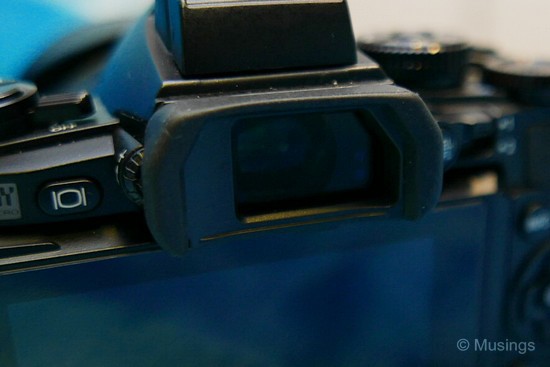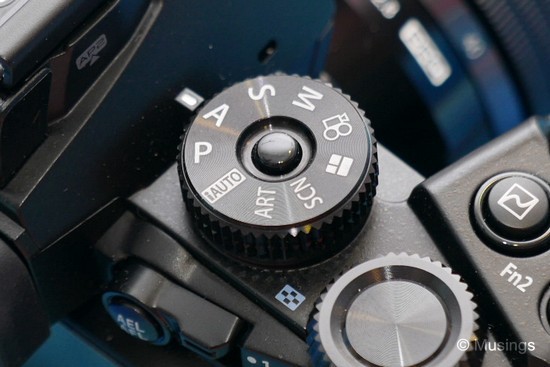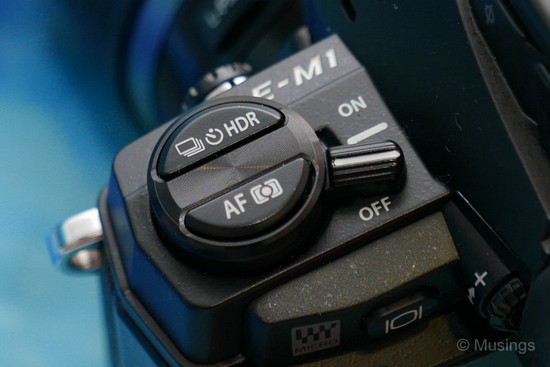My first impressions of the E-M1 against the E-M5 after several days of use!
The E-M1’s overall ergonomics and handling surpasses the E-M5, easily. The handgrip makes it easier to balance the camera’s weight against mid-length zooms, and the two configurable front and back dials are slightly stiffer and ribbed, and make accidental turns less likely than the E-M5.
Couple of neat functions not present on the E-M5 – including configurable exposure bracketing, built-in HDR, faster top-shutter speed, and WIFI support though its phone-control implementation seems a little more clunky than Panasonic’s on my LX100. Still, I can finally take family pictures using quality prime lens glass and a smartphone remote!
The image processing software in the E-M1 is also supposedly improved from that of the E-M5’s, though I haven’t pixel-peeped to be able to tell where the differences are. Finally, the E-M1 offers better weather-proofing, though I honestly don’t think I’ll ever be bringing this out in rain LOL.
The E-M1’s 0.74x magnification electronic viewfinder makes picture composition much easier than the E-M5’s 0.58x. and with higher EVF resolution to boot too.
Its eye-cup also feels more securely locked in-place in its holder than the E-M5’s. I’m already on my third E-M5 eyecup, with the last two accidentally dislodged and lost. That it’s slightly protruding is both an advantage and disadvantage though: my nose is less likely to come in contact with the rear monitor (transfer of facial oil smudges onto the monitor – eek), but it’s also harder to see the entire viewfinder without having to pan my eyeball about when peering through the viewfinder.

The mode-dial lock is a nice touch – press once to lock, press again to unlock. The mode-dial on the E-M5 is too easy to accidentally turn too. On more than a few occasions, I triggered severely over-exposed shots because the E-M5 dial had without my knowledge switched to Shutter-priority mode.

Much harder to slide the memory card slot cover open!
The On/Off lever is now on the top-left panel, compared to the bottom right on the E-M5’s back. Not a good change since it’s impossible now to fish-out the camera from my bag and flip it on in a single motion.

The E-M1 is obviously heavier than the E-M5 though still fairly light for a DSLR-styled camera. Coupled with the 12-40mm f2.8 though is a very different story; the lens and camera is now inching closer to the weight of my last APS-C DSLR with a similar lens – the D7000 with the Sigma 24-60mm f2.8. Coupled with even a light flashgun like the Nissin i40 will make one nervous about hauling the E-M1 about, even with its handgrip. That makes a handstrap or vertical battery grip almost a necessity.
Some casual shots of Peter and Hannah next:



Hello CY,
Love the third picture! It’s so spontaneous and Peter’s expression is priceless. Nice shot!
I got a chance to try out the 12-40mm days ago (borrowed from a nice colleague). I was surprised at its size and weight after mounting it on my E-M5. Nonetheless, I totally love the sharpness and richness of the colour. So, I plan to get one too.
However, I will be keeping my E-M5 for the time-being. Quite costly to buy another E-M1 as I still want to save some moolahs to buy a wide-angle lens. =)
Some of the newer Olympus models BTW include a KeyStone correction function – pretty useful feature to have for wide-angle shooters. Quick comparison on what it’s about:
http://thedigitalstory.com/2014/11/how-to-use-keystone-compensation-omd-em1.html
The correction can be done post-processing, but it’s convenient to have it in-body.:)